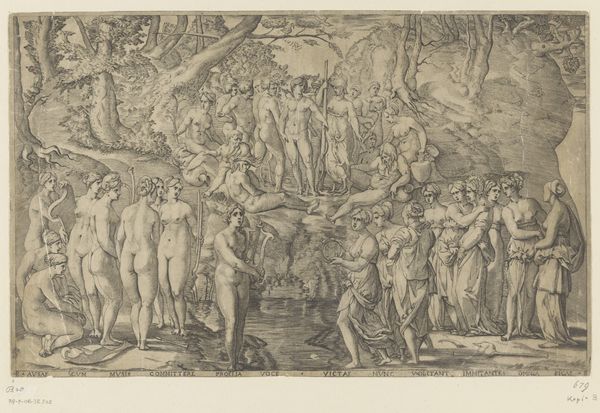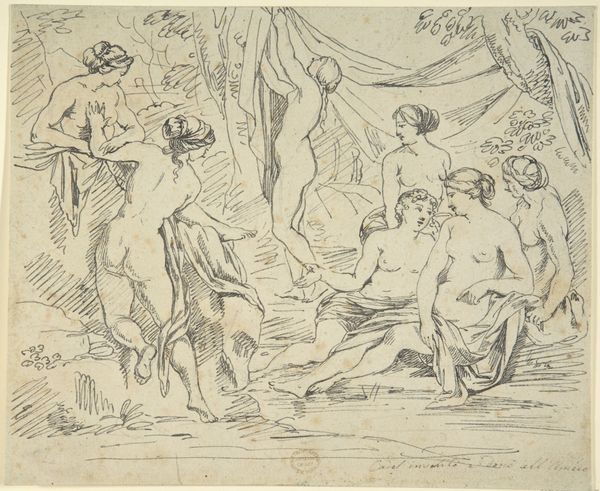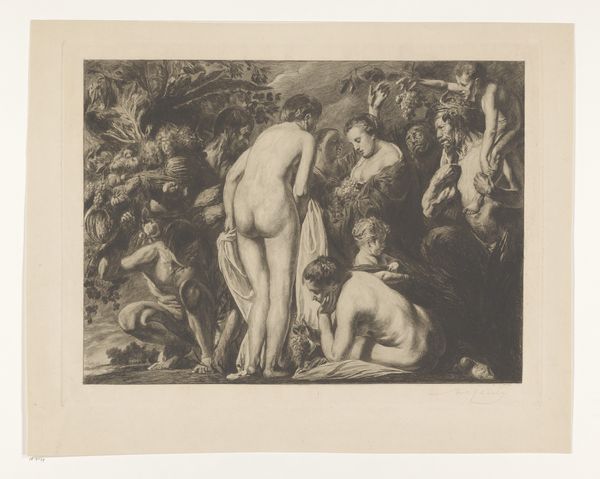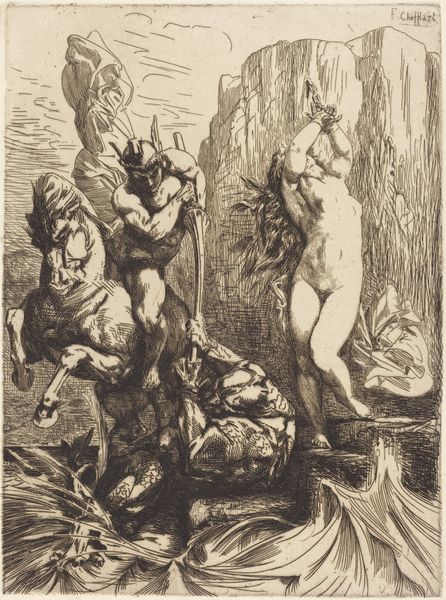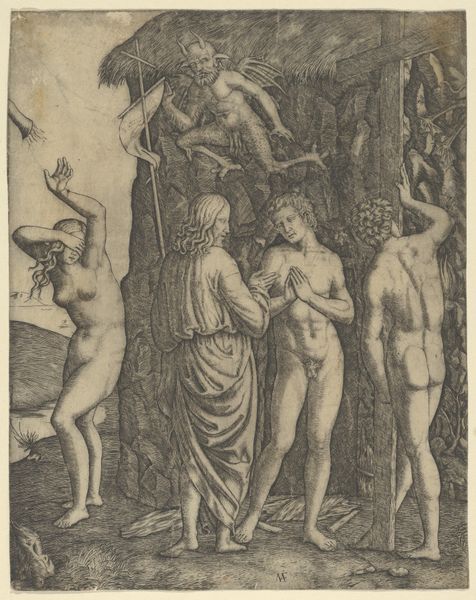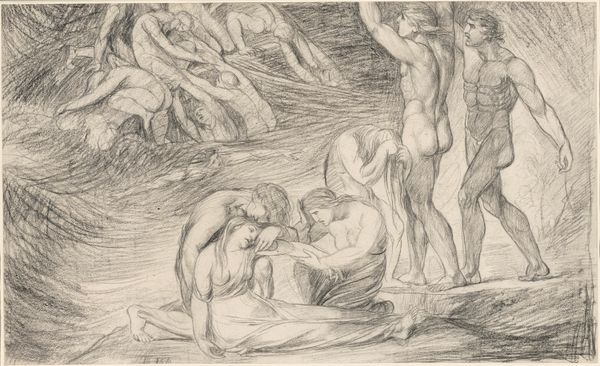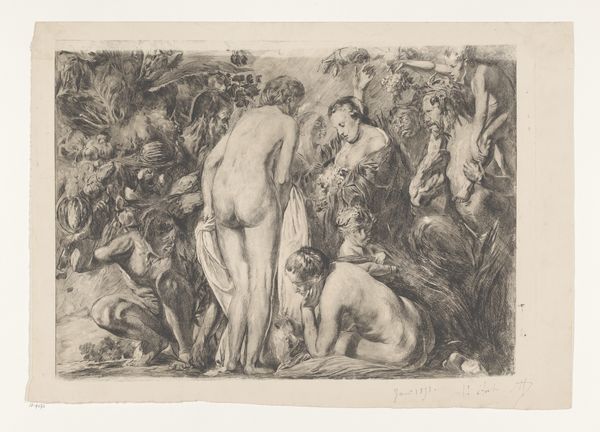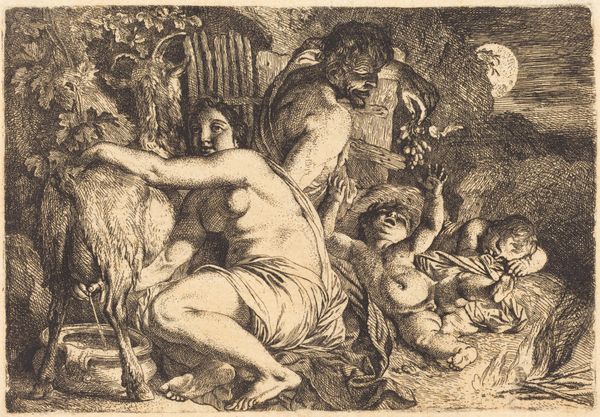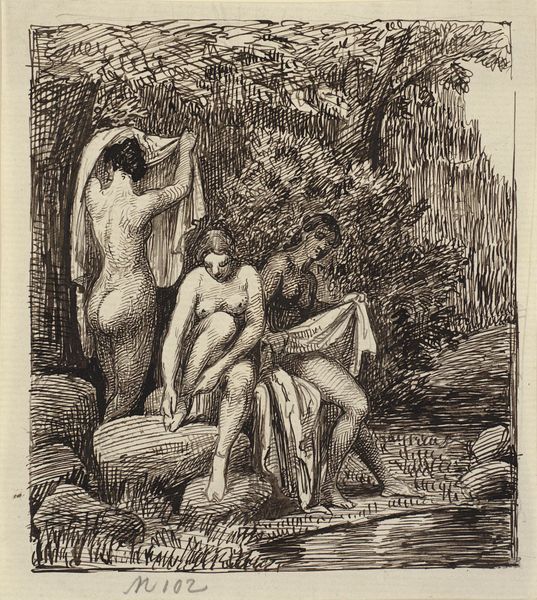
print, etching
#
ink drawing
# print
#
etching
#
landscape
#
figuration
#
history-painting
#
academic-art
#
nude
Dimensions: overall: 23.9 x 31.9 cm (9 7/16 x 12 9/16 in.)
Copyright: National Gallery of Art: CC0 1.0
Editor: Here we have François-Nicolas Chifflart’s "Diana and Her Nymphs" from 1865, an etching. I’m struck by the use of line in this piece. The figures are so precisely rendered, almost photographic. How do you approach understanding this print? Curator: The linear precision is certainly noteworthy, and can we examine that further? Consider the relationships between line weight and implied depth. Observe how closely grouped hatching simulates shadows, creating volume within the figures. Does this systematic application reveal the underlying structural principles employed by the artist? Editor: It does. The lighter lines give the figures volume, but how much does the landscape contribute to that effect? Curator: The landscape functions less as a contextual backdrop, and more as a compositional element mirroring the dynamic arrangement of the figures. The lines mimic that flow of energy to produce unity. Consider, too, how the strategic placement of darker, more densely etched areas both anchors the composition and propels our gaze across the work. Editor: So, it’s less about what’s depicted, but more about how it’s depicted? Curator: Precisely. While we may speculate about the narrative or allegorical intent, a rigorous analysis of its formal construction is our primary point of entry. Observe the strategic deployment of visual elements. It all leads back to structure, and the intentionality in lines, tonal variation, and composition. These elements operate in harmonious concert, achieving balance. What would you add? Editor: Thinking about line and form, rather than the mythological figures themselves, provides a new understanding for how this work creates a sense of movement and unity, a lesson for seeing art in new ways.
Comments
No comments
Be the first to comment and join the conversation on the ultimate creative platform.
